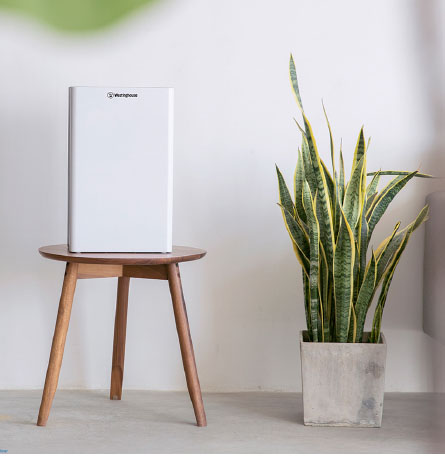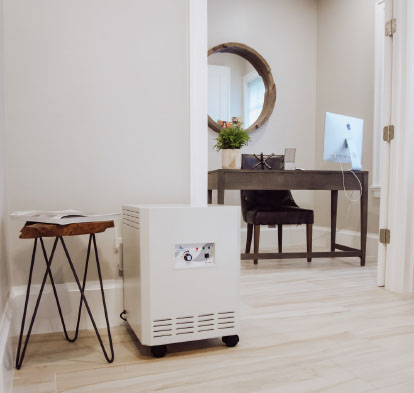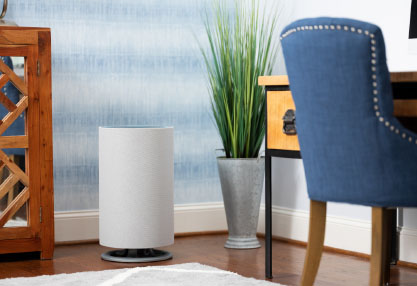Breathe Easy
Indoor Air Quality—COVID And Beyond
By Melanie Carden

Air quality has been on my mind, and I’m not alone. Even before the pandemic, I was becoming more aware of the urgency for improving indoor air quality. In fact, the Environmental Protection Agency notes that “…indoor air pollution is among the top five environmental health risks.” Knowing people who live with the daily struggles of COPD lung disease—and now the pandemic—it was time to get a better understanding of residential air purification. I called upon air quality expert Ian Cull, who has worked with NASA and is a well-known speaker on the subject. To simplify this complex topic, I asked Cull to help us sift through all the air purifier claims and lingo.
WHAT TO LOOK FOR
The essential is an air cleaner with a high clean air delivery rate (CADR). For a small bedroom or enclosed office space, 100 is fine; something around 300 is better for large open areas. For COVID, choose a HEPA (high efficiency particulate air) filter and avoid other technologies, especially those claiming to kill the virus.
When it comes to removing particles, HEPA is the king of the hill. Most other technologies will underperform, and those that might exceed it do so only nominally.

THE COSTS
Cull explains that non-HEPA technologies are often more costly—resulting in a nominal increase in effectiveness but at a higher price point. He mentioned that other methods may have redeeming qualities but to be cautious. For example, “Ultraviolet (UV) and high heat are designed to kill micro-organisms and viruses, rather than physically remove them. UV can work but there are safety concerns as these germicidal wavelengths can cause eye damage if not properly shielded. High heat is very energy intensive when compared to HEPA,” he said.
If you’re thinking of investing in an air purifier, you can explore several affordable small-space purifiers as well as the brands below—each offering a HEPA filter, at a minimum. Be sure to measure the space and choose an appropriate option—otherwise you risk reducing the unit’s ability to exchange the air efficiently. Do you have central air in your home? Check to see if you have a “whole house fan” setting. If so, it might very well have a HEPA filter, and this might be an option as well.
Those working from home and seeing only household family members, may not feel the need for an air purifier in terms of the pandemic. An essential worker, on the other hand—might want to add one into their already existing COVID-awareness layers. But even when we move beyond the pandemic, the quality of our indoor air is essential to our health—so be sure to change the filter according to manufacturer directions.

Westinghouse 1702 The long-trusted brand offers this well-designed, living-ready unit starting at $500. It uses both HEPA filtration and its own patented NCCO activated oxygen technology. It is appropriate for spaces up to 500 square feet. Info: westinghousecleanair.com
Oransi Mod It began as an engineer’s quest to find better indoor air quality for his asthmatic son. Oransi Mod boasts a smart design—from the glass user interface to the cylindrical shape with an orange carry handle and filter handle so a dirty filter will never be touched. This powerful unit is $600 and boasts a super-quiet user experience. It is appropriate for spaces up to 1,250 square feet.
Info: oransi.com
EnviroKlenz Air System Plus Military-grade technology is the cornerstone of the EnviroKlenz Air System Plus. It uses HEPA filtrations with the added feature of non-ozone producing UVC bulbs to provide additional germicidal irradiation and internal system cleaning. Rated for spaces up to 1,000 square feet, it comes in either white or black. Info: enviroklenz.com





